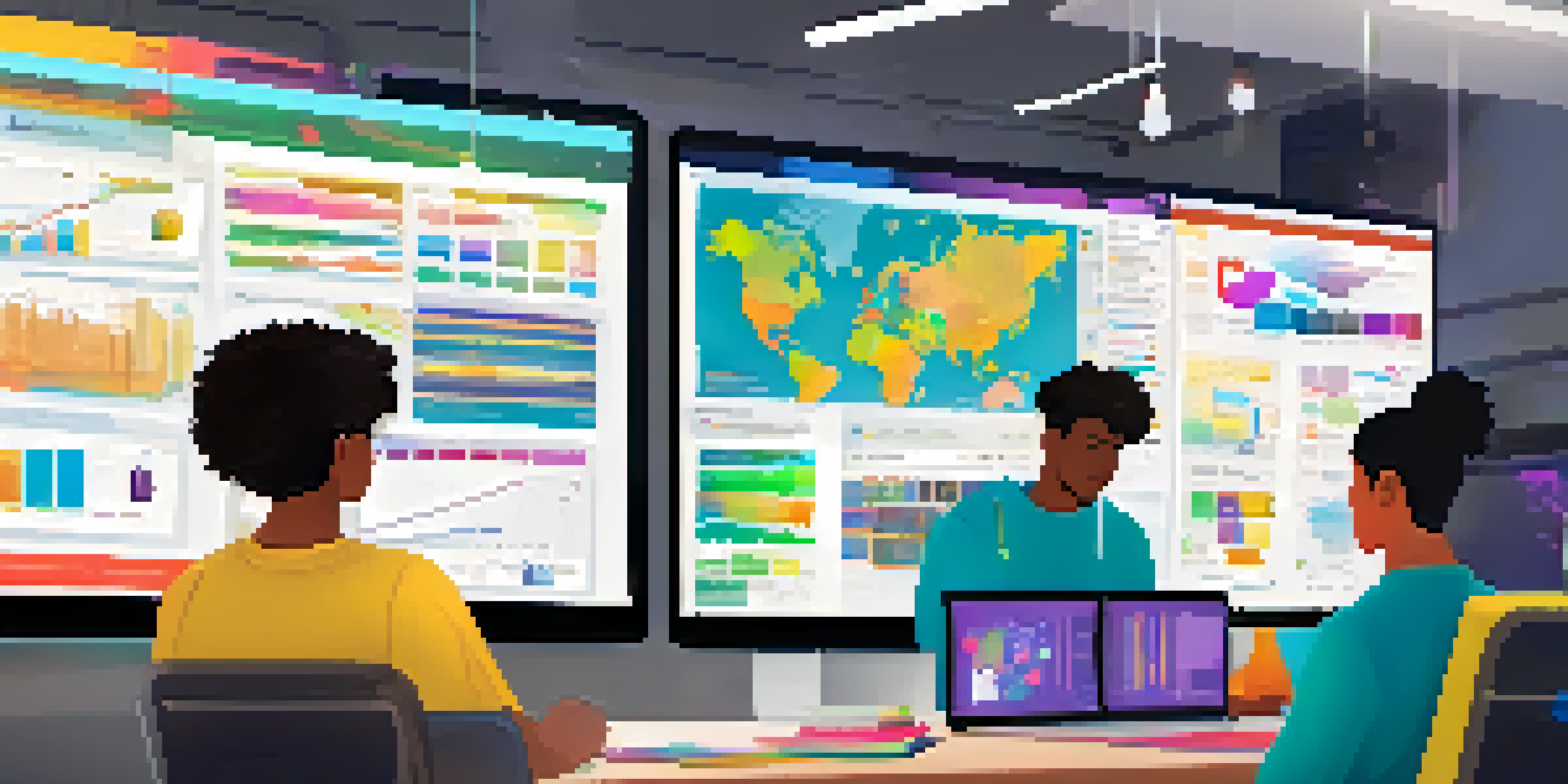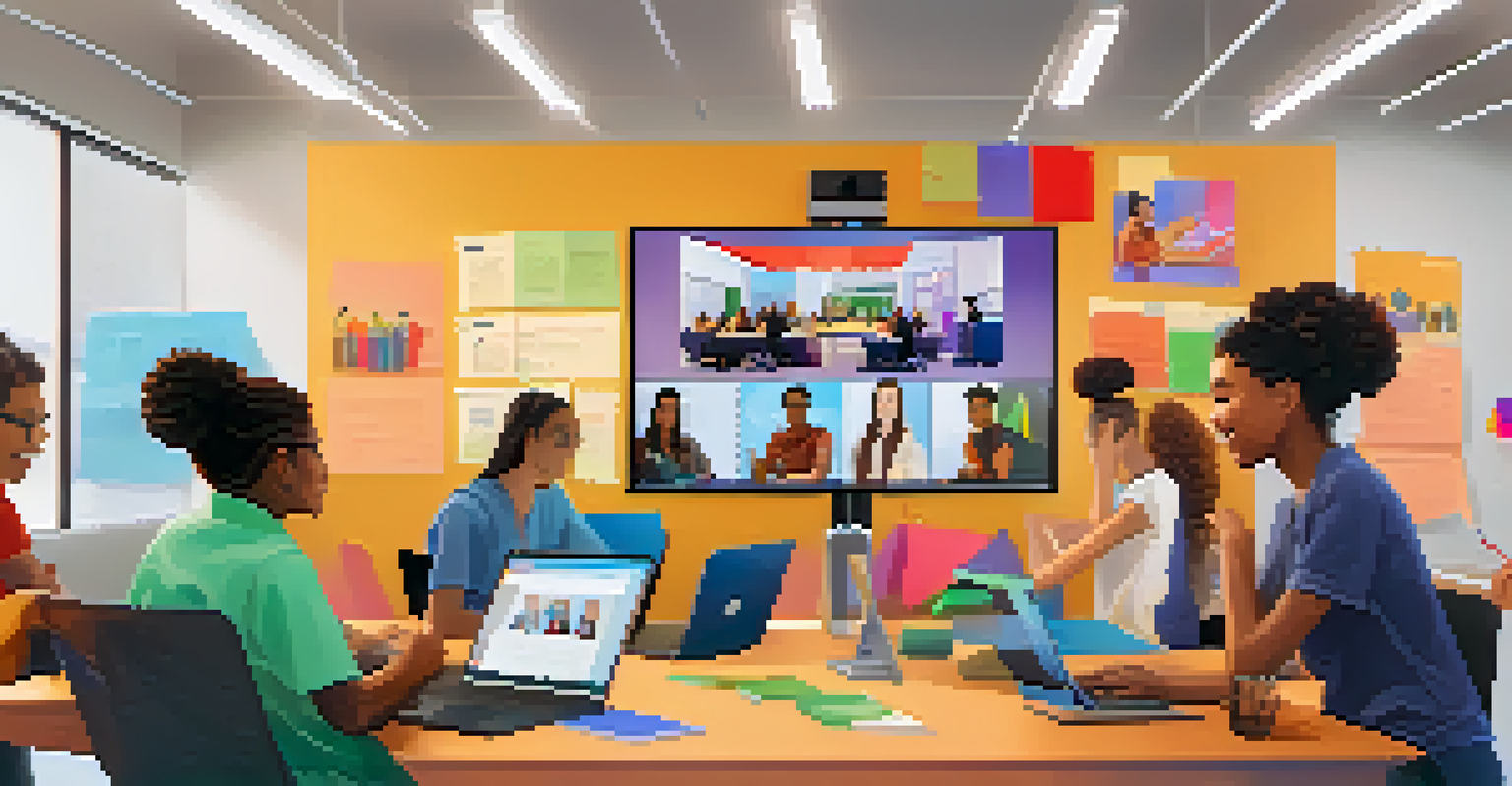Collaborative Learning in Virtual Classrooms: Best Practices

Understanding Collaborative Learning in Virtual Spaces
Collaborative learning is an educational approach that emphasizes teamwork and shared goals. In virtual classrooms, this method becomes even more essential, as it encourages students to engage actively despite physical distances. By working together, students can build a sense of community, fostering connections that enhance the learning experience.
Alone we can do so little; together we can do so much.
In essence, collaborative learning transforms the traditional model of education from a teacher-centered approach to a more student-centered one. Here, learners are not just passive recipients of information; instead, they become active participants in their educational journey. This shift is particularly valuable in online environments, where motivation and connection can sometimes wane.
To put it simply, think of collaborative learning as a potluck dinner. Everyone brings a dish to share, contributing to a richer, more diverse experience. In the same way, each student's unique perspective and knowledge enrich the collective learning environment, making it more vibrant and engaging.
Establishing Clear Goals and Expectations
Setting clear goals is crucial for effective collaborative learning in virtual settings. When students understand the objectives of their group work, they can better navigate their tasks and allocate their time efficiently. This clarity helps minimize confusion and ensures that everyone is on the same page from the outset.

Additionally, establishing expectations around participation and communication can help maintain accountability among group members. For instance, outlining roles or responsibilities within the team can ensure that every participant has a meaningful contribution. This structure not only promotes fairness but also enhances the overall learning experience.
Collaborative Learning Enhances Engagement
This approach transforms education from teacher-centered to student-centered, promoting active participation and community building among learners.
Imagine embarking on a road trip without a map or destination. It would be chaotic and frustrating, wouldn't it? Similarly, without clear goals, collaborative learning can easily veer off course. By providing a roadmap, educators empower students to reach their destination collaboratively and successfully.
Utilizing Technology to Enhance Collaboration
Technology plays a pivotal role in facilitating collaborative learning in virtual classrooms. Tools like video conferencing, discussion boards, and project management platforms enable students to connect and collaborate effectively, regardless of their location. These resources create an interactive environment that mirrors in-person interactions.
Collaboration allows us to know more than we are capable of knowing by ourselves.
Moreover, incorporating collaborative tools can enhance engagement and motivation. For instance, using shared documents allows students to brainstorm and edit ideas in real time, fostering a sense of ownership over their work. This immediacy not only makes learning more dynamic but also cultivates essential digital skills.
Think of technology as the glue that binds the collaborative process together. Just as glue holds pieces of a puzzle in place, these digital tools help maintain connection and organization among team members, ensuring that the collaborative learning experience is seamless and productive.
Encouraging Open Communication Among Students
Open communication is the cornerstone of successful collaborative learning. In virtual classrooms, it's essential that students feel comfortable sharing their ideas, asking questions, and providing feedback. Creating a supportive atmosphere helps break down barriers, allowing for more authentic and meaningful exchanges.
Establishing communication norms can further enhance this openness. For instance, encouraging the use of respectful language, active listening, and constructive criticism sets the stage for fruitful discussions. When students know that their contributions are valued, they are more likely to engage fully in the collaborative process.
Technology Facilitates Collaboration
Digital tools like video conferencing and shared documents enable effective teamwork and enhance engagement in virtual classrooms.
Consider open communication as the lifeline of a team. Just as a lifeline keeps people connected during a challenge, transparent dialogue among students fosters unity and collaboration, making it easier to navigate the complexities of group work in virtual classrooms.
Fostering a Sense of Community in Virtual Classrooms
Creating a sense of community is vital for collaborative learning in online environments. When students feel connected to their peers, they are more likely to participate actively and collaborate effectively. Initiatives like icebreakers and group projects help cultivate this sense of belonging right from the start.
Moreover, regular check-ins and social interactions can strengthen these community bonds over time. For instance, virtual coffee breaks or informal catch-up sessions create opportunities for students to connect on a personal level, further enhancing their collaborative experience. These interactions can make virtual learning feel less isolated.
Think of a virtual classroom as a garden. Just as plants need nurturing and care to thrive, a sense of community needs attention and effort to flourish. By investing time in building relationships, educators can create a vibrant learning environment where collaboration blossoms.
Incorporating Diverse Learning Strategies
Diversity in learning strategies can significantly enhance collaborative learning experiences. By incorporating various methods—such as group discussions, peer teaching, and hands-on projects—educators can cater to different learning styles and preferences. This inclusivity helps ensure that every student has the opportunity to contribute meaningfully to the group.
Additionally, mixing up learning approaches can keep students engaged and motivated. For instance, integrating gamification elements or using real-world scenarios can make collaborative tasks more exciting and relevant. When students feel that their learning is connected to real-life situations, they are more likely to invest their efforts.
Open Communication Builds Community
Establishing norms for respectful dialogue fosters an environment where students feel comfortable sharing ideas and collaborating effectively.
Consider diverse learning strategies as a colorful palette for an artist. Just as an artist uses different colors to create a masterpiece, educators can blend various approaches to foster a rich and engaging collaborative learning experience that resonates with all students.
Evaluating Collaborative Efforts and Outcomes
Evaluating collaborative efforts is essential for understanding what works and what doesn't in virtual classrooms. By providing constructive feedback on group interactions, educators can help students reflect on their collaboration skills and identify areas for improvement. This process not only enhances learning but also promotes personal growth.
Additionally, incorporating self-assessments or peer evaluations can empower students to take ownership of their learning journey. This reflective practice encourages them to think critically about their contributions and the dynamics of their group. Such evaluations can lead to more thoughtful collaboration in future projects.

Think of evaluation as a compass guiding a traveler. Just as a compass helps navigate the way, feedback and assessment provide direction for improvement, ensuring that collaborative learning not only meets educational goals but also fosters growth and development.